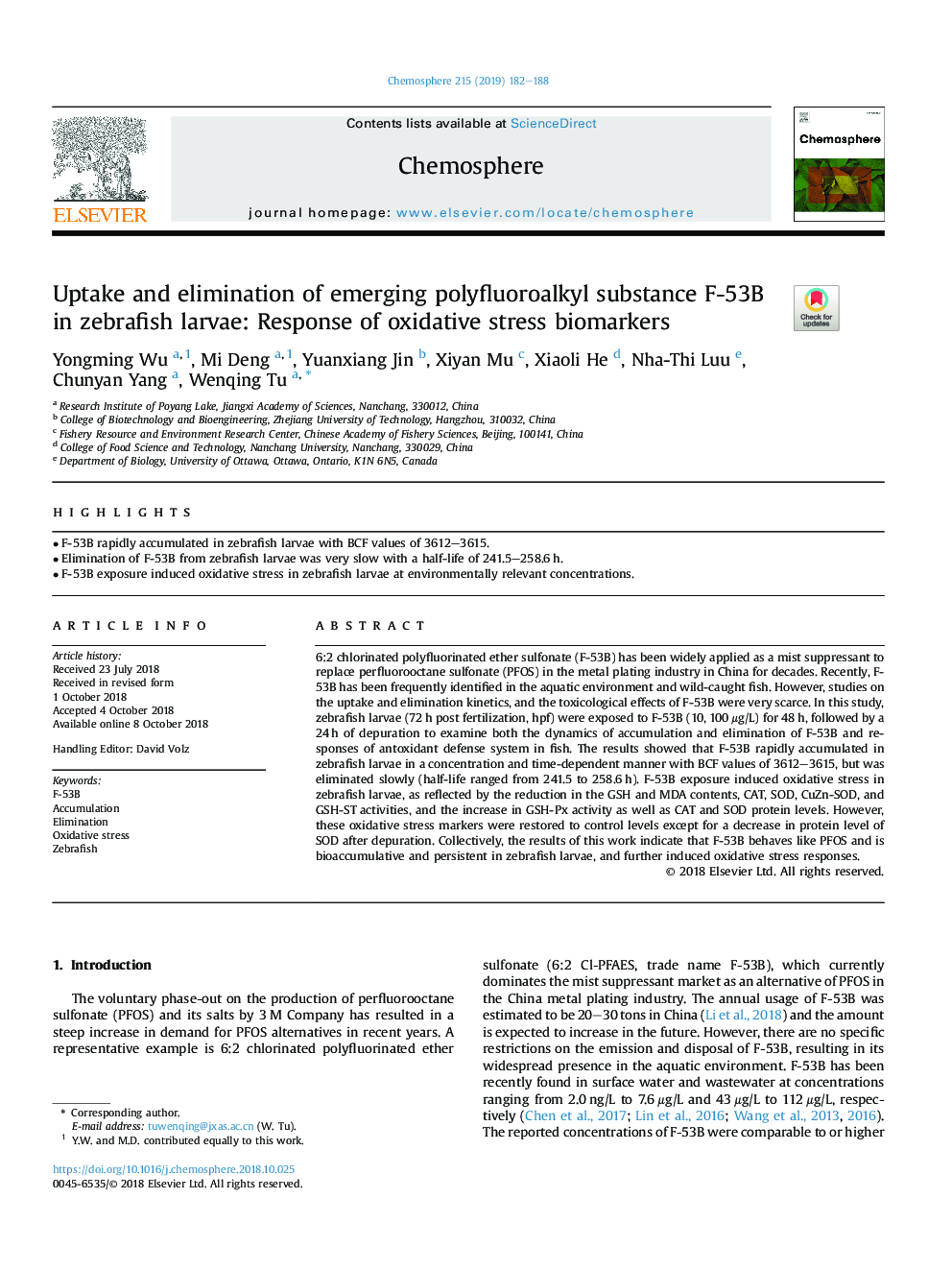| Article ID | Journal | Published Year | Pages | File Type |
|---|---|---|---|---|
| 11010209 | Chemosphere | 2019 | 7 Pages |
Abstract
6:2 chlorinated polyfluorinated ether sulfonate (F-53B) has been widely applied as a mist suppressant to replace perfluorooctane sulfonate (PFOS) in the metal plating industry in China for decades. Recently, F-53B has been frequently identified in the aquatic environment and wild-caught fish. However, studies on the uptake and elimination kinetics, and the toxicological effects of F-53B were very scarce. In this study, zebrafish larvae (72â¯h post fertilization, hpf) were exposed to F-53B (10, 100â¯Î¼g/L) for 48â¯h, followed by a 24â¯h of depuration to examine both the dynamics of accumulation and elimination of F-53B and responses of antoxidant defense system in fish. The results showed that F-53B rapidly accumulated in zebrafish larvae in a concentration and time-dependent manner with BCF values of 3612-3615, but was eliminated slowly (half-life ranged from 241.5 to 258.6â¯h). F-53B exposure induced oxidative stress in zebrafish larvae, as reflected by the reduction in the GSH and MDA contents, CAT, SOD, CuZn-SOD, and GSH-ST activities, and the increase in GSH-Px activity as well as CAT and SOD protein levels. However, these oxidative stress markers were restored to control levels except for a decrease in protein level of SOD after depuration. Collectively, the results of this work indicate that F-53B behaves like PFOS and is bioaccumulative and persistent in zebrafish larvae, and further induced oxidative stress responses.
Related Topics
Life Sciences
Environmental Science
Environmental Chemistry
Authors
Yongming Wu, Mi Deng, Yuanxiang Jin, Xiyan Mu, Xiaoli He, Nha-Thi Luu, Chunyan Yang, Wenqing Tu,
